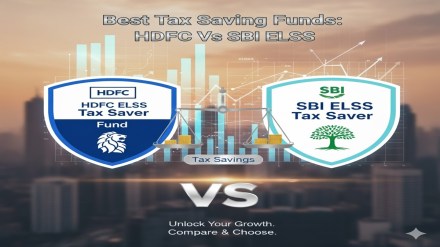When it comes to investing, earlier the mindset was that you either invest to save tax or to build wealth. Those whose main objective was tax saving typically invested in schemes like PPF, NSC, post office deposits, or tax-saving FDs. These tax savings plans enjoy Section 80C deduction benefits under the Old Tax Regime of the Income Tax Act, 1961. On the other hand, people focused on wealth creation generally avoided such savings products, as these instruments offer limited returns after accounting for inflation. Instead, they preferred equities or mutual funds, given their higher risk appetite.
Now imagine a product that offers the best of both worlds — one that gives you tax-saving benefits and the potential for high returns like mutual funds. Yes, you guessed it right — it’s the Equity-Linked Savings Scheme (ELSS), also known as tax-saver funds.
With the introduction of the new tax regime, which does not offer any tax-saving benefits on traditional investment schemes, many investors have lost interest in such plans. Those who earlier invested mainly for tax benefits now find the new regime more attractive, as it offers lower tax rates without the need for multiple deductions or investments. In this situation, recent trends suggest, retail investors have gone slow on these schemes.
Now, in this scenario, let’s think about ELSS funds. Since they offer two key benefits — tax savings and the potential for high returns through equity exposure — investors may still prefer to stay invested in them. Even if the tax-saving advantage is no longer available under the new tax regime, the wealth-building opportunity through participation in the equity market continues to make ELSS an attractive option for long-term investors.
How have ELSS funds done over the 3- to 10-year period?
ELSS funds as a category have delivered annualised returns of 17.51% over 3 years, 19.92% over 5 years, and 13.80% over 10 years.
Over a 3-year period, ELSS funds have given annual returns in the range of 14% to 28%. When we look at a 5-year horizon, the performance gets even better. Many of the best ELSS funds have given 20% or more annualised returns. Over a 10-year period, long-term investors have also seen healthy growth in their investments. ELSS schemes have given 16–22% annual returns over 10 years. All these returns are based on the direct plans of ELSS funds.
From the 56 ELSS funds (direct plans) available on Value Research, we have picked the two best-performing ones. The selection was based on 5-star ratings from Value Research and CRISIL, and only funds with a track record of at least 10 years were included, since we are analysing their performance over 3, 5, and 10 years.
Best ELSS funds: HDFC ELSS Tax Saver Fund and SBI ELSS Tax Saver Fund – 3, 5 and 10 year returns compared
HDFC ELSS Tax Saver Fund
In the last 3 years, the fund has returned 23.51% CAGR, which is higher than its benchmark BSE 500 TRI at 16.88%, and also above the ELSS category average of 18.77%.
Over 5 years, the fund has done even better, giving 25.95% annual returns, compared to 20.05% from the benchmark and 21.24% from the category.
Even over the 10 years, the fund has maintained a steady performance with 14.92% annualised returns, slightly higher than the benchmark’s 14.40%.
SBI ELSS Tax Saver Fund
In the past 3 years, SBI ELSS Tax Saver Fund has generated a solid 25.62% CAGR, much higher than its benchmark BSE 500 TRI’s 16.88% and the ELSS category average of 18.77% annualised growth.
Over 5 years, the fund has continued to do well with 25.42% annualised returns, again beating the benchmark’s annualised growth rate of 20.05% and the category’s 21.24%.
Even over 10 years, it has maintained steady performance with 15.24% annualised returns, higher than both the benchmark’s 14.40% and the category average of 14.92% CAGR.
Summing up…
Both HDFC ELSS Tax Saver Fund and SBI ELSS Tax Saver Fund have delivered strong performance across different time periods.
SBI ELSS Tax Saver Fund has slightly outperformed HDFC ELSS Tax Saver Fund in recent years, especially over the 3- and 5-year horizons.
Over 10 years, both funds have delivered good double-digit returns, comfortably beating their benchmark and the overall ELSS category average.
Investors looking for tax-saving options with long-term wealth creation potential can consider either of these funds, depending on their comfort with other metrics of both schemes and, of course, after assessing their risk appetite and own investment style.
Note of caution for investors
It’s important to note that these are past returns, which we have analysed in the write-up, and they do not guarantee similar performance in the future. Mutual fund returns depend on market conditions and may go up or down over time. Investors should consider their risk appetite and investment goals before investing in ELSS or any equity-linked fund.
Disclaimer: The above content is for informational purposes only. Mutual Fund investments are subject to market risks. Please consult your financial advisor before investing.
